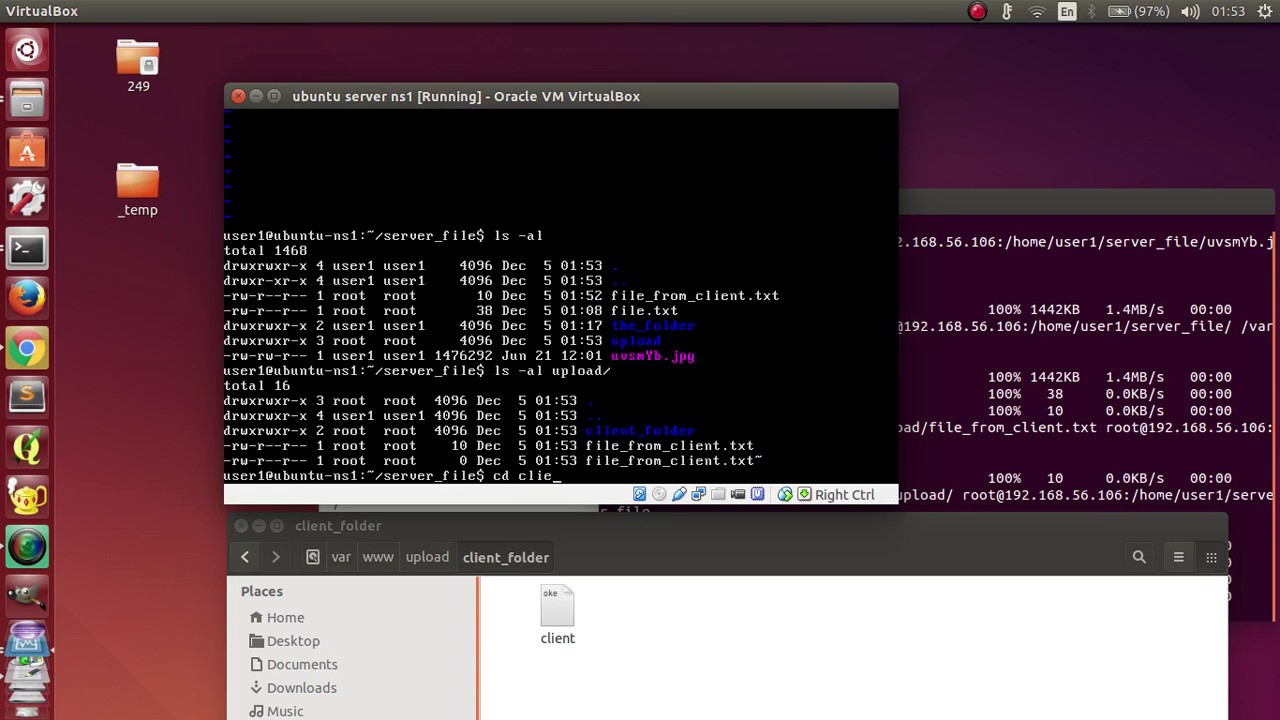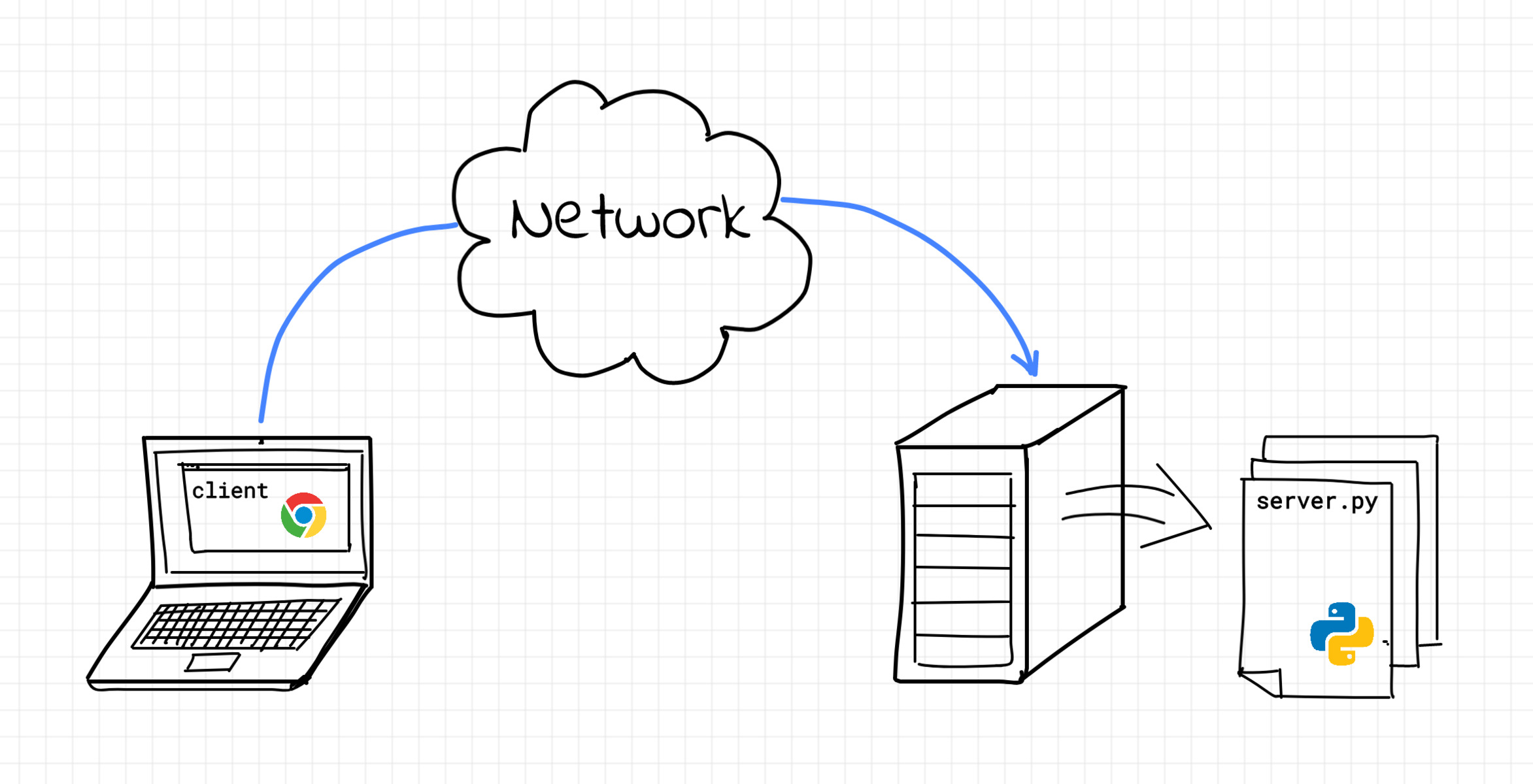Introduction
The relationship between web browsers and web servers is fundamental to the functioning of the internet. When you open a web browser and type in a website address or click on a link, you are initiating a complex process that involves the transfer of data between your browser and the web server hosting the website. This seamless exchange of information is made possible by a specific protocol that governs the communication between the browser and the server.
In this article, we will delve into the intricacies of web browsers and web servers, exploring their roles in facilitating the transfer of data. Additionally, we will shine a spotlight on the protocol that serves as the backbone of this data exchange, shedding light on its significance in enabling the seamless flow of information across the internet.
Understanding the dynamics of web browsers and web servers, as well as the protocol that underpins their communication, is crucial for gaining insight into the inner workings of the internet. By unraveling these interconnected elements, we can develop a deeper appreciation for the technology that powers our online experiences and drives the digital landscape forward.
Understanding Web Browsers and Web Servers
Web browsers and web servers are integral components of the internet ecosystem, each playing a distinct yet interconnected role in the seamless delivery of web content to users around the world. Understanding the functions and interactions of these entities is essential for unraveling the intricacies of data transfer on the internet.
Web Browsers:
Web browsers are the gateway through which users access and interact with the vast expanse of information available on the internet. Popular web browsers such as Google Chrome, Mozilla Firefox, Safari, and Microsoft Edge serve as the interface between users and the web. When a user enters a web address or clicks on a link, the browser initiates a series of requests to retrieve the associated web content.
Web browsers are equipped with rendering engines that interpret and display various types of content, including HTML, CSS, and JavaScript, in a visually coherent manner. This enables users to view web pages, interact with multimedia elements, and navigate through the interconnected web of information with ease.
Web Servers:
On the other end of the spectrum, web servers form the backbone of the internet, housing and serving the web content requested by users. A web server is a specialized computer designed to store, process, and deliver web content to clients, such as web browsers, upon request. When a user accesses a website, their browser sends a request to the corresponding web server, prompting the server to retrieve and transmit the requested content back to the user's browser.
Web servers utilize various technologies, such as Apache, Nginx, and Microsoft Internet Information Services (IIS), to host and manage websites, web applications, and other digital assets. These servers are configured to handle incoming requests, process dynamic content, and ensure the secure and efficient delivery of data to users across the internet.
Interplay Between Web Browsers and Web Servers:
The interaction between web browsers and web servers forms the crux of data transfer on the internet. When a user initiates a request for a web page or resource, their browser communicates with the corresponding web server, triggering a series of data exchanges that culminate in the seamless delivery of the requested content to the user's device.
This intricate interplay involves the transmission of Hypertext Transfer Protocol (HTTP) requests from the browser to the web server, followed by the retrieval and transmission of web content in the form of HTML, CSS, JavaScript, images, and other media files. The collaborative efforts of web browsers and web servers ensure that users can access, explore, and interact with a diverse array of web content with remarkable speed and efficiency.
In essence, web browsers and web servers operate in tandem to facilitate the retrieval and display of web content, forming the backbone of the internet's interconnected infrastructure.
By comprehending the roles and interactions of web browsers and web servers, we gain a deeper appreciation for the seamless data transfer that underpins our online experiences. This understanding sets the stage for exploring the protocol that governs the communication between these entities, further enriching our knowledge of the internet's inner workings.
The Protocol Used for Data Transfer
At the heart of the seamless data transfer between web browsers and web servers lies a foundational protocol known as Hypertext Transfer Protocol (HTTP). This protocol serves as the bedrock of communication on the World Wide Web, orchestrating the exchange of data between clients, such as web browsers, and servers hosting web content.
Understanding HTTP:
HTTP operates as a request-response protocol, governing the transmission of various types of data, including text, images, videos, and other web resources. When a user initiates a request for a web page or resource through their browser, an HTTP request is generated and dispatched to the corresponding web server. This request contains essential information, such as the type of resource being sought and additional parameters that guide the server in processing the request.
Upon receiving the HTTP request, the web server processes the incoming data and formulates an appropriate response. This response, encapsulated within an HTTP message, contains the requested web content, along with relevant metadata and status codes that convey the outcome of the request. The server then dispatches the HTTP response back to the user's browser, finalizing the data transfer cycle.
Evolution of HTTP:
Over time, HTTP has undergone several iterations and enhancements to accommodate the evolving demands of web communication. The transition from HTTP/1.1 to HTTP/2 marked a significant leap in performance and efficiency, introducing features such as multiplexing, header compression, and server push to streamline data transfer and optimize resource utilization.
Furthermore, the emergence of HTTPS, a secure variant of HTTP, has bolstered the integrity and confidentiality of data exchange on the web. By employing encryption mechanisms, HTTPS ensures that sensitive information transmitted between clients and servers remains shielded from unauthorized access and tampering, fostering a secure and trustworthy online environment.
The Role of HTTP in Data Transfer:
HTTP plays a pivotal role in orchestrating the seamless transfer of web content, enabling users to access, retrieve, and interact with a myriad of resources across the internet. The protocol's standardized approach to data exchange fosters interoperability and compatibility across diverse web platforms, ensuring that web browsers and servers can communicate effectively regardless of their underlying technologies.
Moreover, the extensibility of HTTP empowers developers and organizations to innovate and integrate advanced features into their web applications, further enriching the user experience and expanding the frontiers of web technology.
In essence, the protocol's ubiquity and adaptability make it a cornerstone of modern web communication, underpinning the dynamic exchange of data that fuels the internet's interconnected landscape.
By unraveling the intricacies of HTTP and its pivotal role in data transfer, we gain a deeper appreciation for the underlying mechanisms that drive the seamless delivery of web content, laying the groundwork for a richer understanding of the internet's inner workings.
Conclusion
In conclusion, the symbiotic relationship between web browsers and web servers, facilitated by the foundational protocol of Hypertext Transfer Protocol (HTTP), forms the backbone of data transfer on the internet. The seamless interplay between these entities enables users to access, retrieve, and interact with a diverse array of web content, underpinning the dynamic landscape of the World Wide Web.
By understanding the distinct roles of web browsers as the user interface and web servers as the content hosts, we gain insight into the collaborative efforts that drive the retrieval and display of web resources. The intricate communication between web browsers and web servers, governed by the HTTP protocol, exemplifies the harmonious synergy that powers the internet's interconnected infrastructure.
Furthermore, the evolution of HTTP, marked by advancements such as HTTP/2 and the widespread adoption of HTTPS, underscores the protocol's adaptability and resilience in meeting the evolving demands of web communication. These enhancements have not only elevated the performance and security of data transfer but have also paved the way for innovative web experiences that transcend traditional boundaries.
As we navigate the digital realm, the significance of HTTP in orchestrating the seamless exchange of web content cannot be overstated. Its standardized approach, coupled with its extensibility, empowers developers and organizations to push the boundaries of web technology, fostering a dynamic and inclusive online environment.
In essence, the protocol's ubiquity and adaptability make it a cornerstone of modern web communication, underpinning the dynamic exchange of data that fuels the internet's interconnected landscape. By unraveling the intricacies of HTTP and its pivotal role in data transfer, we gain a deeper appreciation for the underlying mechanisms that drive the seamless delivery of web content, laying the groundwork for a richer understanding of the internet's inner workings.
In closing, the seamless data transfer between web browsers and web servers, orchestrated by the venerable protocol of HTTP, exemplifies the collaborative spirit that defines the internet. As we continue to embrace the boundless potential of web technology, the enduring legacy of HTTP as the enabler of seamless data transfer serves as a testament to the remarkable ingenuity and interconnectedness that define the digital age.

























